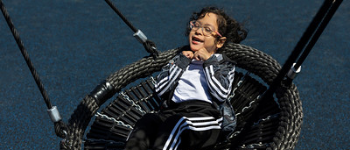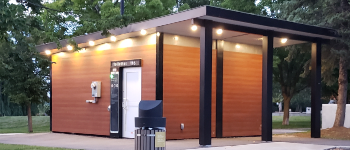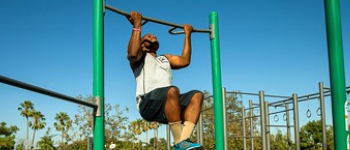Revitalizing Neighborhoods: An HOA's Guide to Community Park and Playground Amenities
Jul 14







Feb 10
Playgrounds have been shown to be excellent for the development of children, and the same can be said about dogs and dog parks. Obviously, they provide a place for dogs to run free and exercise, but how else are they beneficial for the community?
Dog parks are areas specifically designed for dogs to run free of a leash. They’re typically fenced-in areas with different equipment dogs can use to run, climb, and jump.
Dog park rules and etiquette include:
There are many benefits to having a dog park in your city or town. Here are the top five reasons for creating a dog park.
Dog-walking and dogs, in general, provide health benefits linked to a decreased risk of cardiovascular diseases (i.e. hypertension, high cholesterol). Stress and lack of exercise are two of the leading causes of these diseases. Pets have been shown to have a relaxing effect on the humans that surround them and push their owners to go out and exercise.
Having a dog park in your town is a great way to provide exercise for the dogs and their owners.
For older people and people with disabilities who may not be able to walk their dogs, dog parks are a safe place for their dogs to get exercise.
Dog parks also provide areas where owners can socialize. In most families, dogs are seen as companions, best friends, and family. Therefore, dog parks provide recreational opportunities and bring together dog lovers, individuals of all ages, and individuals of diverse socioeconomic status, bringing the community closer together.
These green, open spaces bring people “out and about” by promoting walkable neighborhoods and a strong sense of community. If this effect happens in a commercial area, the traffic near local businesses would increase.
Finally, parks for dogs can be a source of protection for the area. A positive effect of the visible presence of individuals walking with their dogs generates an increased feeling of collective safety in the neighborhood.
Homeowners will naturally gravitate toward areas with more greenery or park space, especially if they have children or dogs. Nearby dog parks will increase a home’s property value because they meet these needs, especially in more urban areas where there may be small yards or the absence of a yard for dogs to play. And now, Americans are spending more money than ever on their pets, which can make neighborhood pet amenities like dog parks and walking trails even more desirable. A well-designed, clean park full of fellow dog owners will make a neighborhood look and feel friendlier.
From pet waste stations to park benches and water fountains, there are ways to create spaces and park amenities that benefit pooches and their human companions.
Here are a few things to include when building your dog park.
Always Include Safe Enclosures. One of the biggest benefits of a dog park is knowing that your pet can run around with no leash and in a safe space. Begin your planning by making sure to choose appropriate fencing materials that are tall enough that dogs can’t jump over them and that don’t contain large gaps that smaller dogs could squeeze through.
Create Separate Play Areas In Your Dog Park Design. Ideally, your dog park design should have two separate play areas to give small and large dogs their own areas to play without hurting each other. Often, pet owners will use the smaller area to condition their puppy to be around other dogs, and the larger area is perfect for rambunctious or large breeds to burn off their energy. Keep in mind that both areas should have similar dog playground equipment and amenities so that everyone is satisfied with their side of the playground.
Install Comfortable Ground Cover. Dog parks should have surfaces that are soft on canine paws yet still hygienic. Although natural grass is a common surface used in dog parks, it is susceptible to damage from dogs digging and running through the grass on a regular basis. For this reason, synthetic turf is an option that offers more durability, and the park maintenance crew can spray it down regularly to remove dog waste or mud. Turf installation can also include adding other materials such as engineered wood fiber to the park to create designated sections for play.
Increase the Fun With Agility Equipment and Challenges. Dog park equipment should encourage canines to try things they cannot do at home. For instance, a dog teeter-totter encourages pets to test their balance, and hoop jumps get pups to leap through the air for fun. Dog park equipment, such as agility courses, also encourage humans at the park to get up and interact with their canine friends so everyone gets involved in the play. Proper dog park design will encourage all dogs to play together.
Add Amenities for Human Companions in Your Dog Park Design. Pet owners are more likely to follow proper park etiquette if you include trash bins where they can deposit their dog’s waste or other refuse. Make sure to set these up near other places where humans will gather such as on benches that are located near the shade. A leash post is another amenity that park visitors appreciate as they get their dog ready to play or head home.
Explore how custom entrance gates can turn a dog park entrance into an impressive welcome sign that everyone loves walking through when they visit the park.
Dogs are human’s best friends, and pet owners leave no stone unturned to pamper their four-legged companions. A walk outdoors is great for bonding with dogs and keeping them healthy and happy.
When looking to design a dog playground, look no further than MRC Recreation. We have dog park equipment solutions to fit all budgets and for all sizes of dogs.